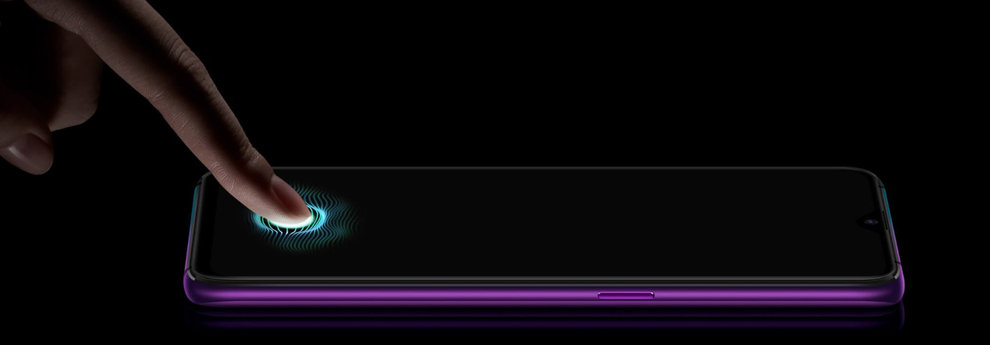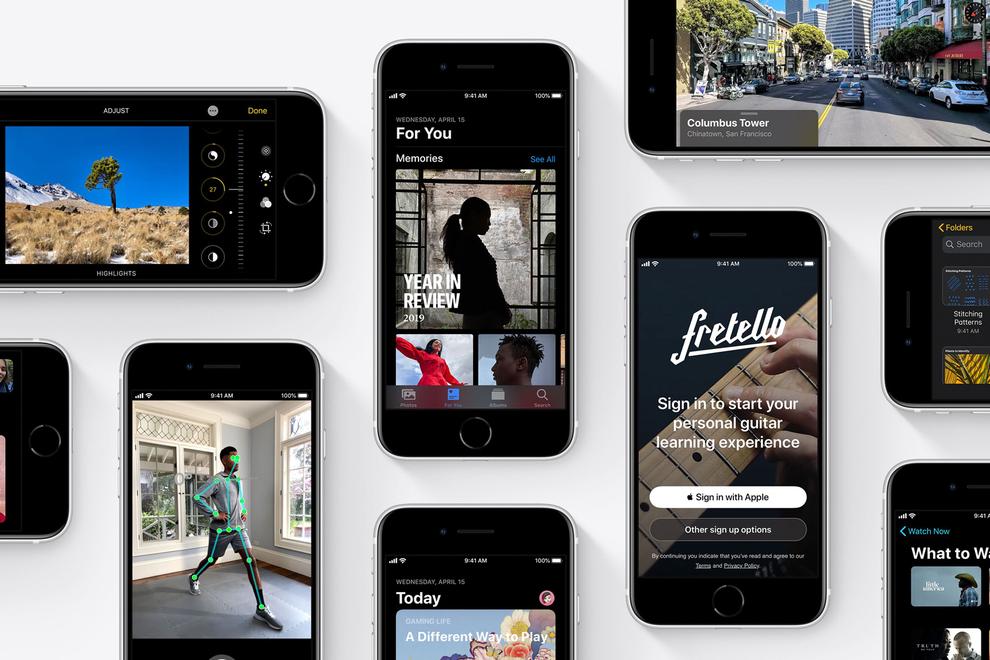Why the iPhone 12 doesn't have an in-display fingerprint sensor
- 23 July, 2021 16:55

If you're wondering the Apple still hasn't released a smartphone with an in-display fingerprint sensor, the answer is actually simpler than you might think: devices like the iPhone 12 and iPhone 12 Pro don't need one.
As long as things are secure enough that you don’t have to worry about it, most consumers are likely to opt for a faster and more reliable technology over a safer one. While in-display fingerprint sensors have been a much sought after smartphone trend in recent years, the level of real-world convenience they offer simply can't compete with the hands-free appeal of solutions like Face ID.
In 2019, Samsung, Huawei, Oppo and other Android smartphone brands embraced the appeal of an in-display fingerprint sensor. Moving the biometric sensor from the back of a device to underneath the screen renders it invisible and the benefits are immediately apparent. Early in-display fingerprint sensors were convenient, reliable and futuristic.
In 2020, in-display fingerprint sensor continued to be dominant and a standard part of the flagship formula - though not all fingerprint sensors are born equal. Compared to their predecessors, more recent in-display fingerprint sensor tech tends to be both faster and more generous in terms of the physical size of the sensor.
Regardless, Apple's iPhone 11, iPhone 12, iPhone 12 Pro and iPhone 12 Pro Max have all opted to exclude the feature in favour of Face ID. Now, the reason for this and the argument for why it isn't a terrible decision isn't terribly complicated.
 Credit: Jason Cross/IDG
Credit: Jason Cross/IDG Face ID is still pretty much the gold standard for face unlock tech in smartphones. When it comes to security, Apple's Face ID is regarded as significantly more secure than the 2D Face Unlock systems found in Android smartphones.
While they still lag behind the high level of protection offered by fingerprint sensors, Face ID still has the edge in speed and convenience. For many, the pitch of a futuristic smartphone that you can unlock with a look trumps one that you can open with a single tap. After all, even a single tap comes second place to none at all.
Of course, just because Apple has chosen to let you unlock your phone using your face rather than your finger this time around doesn't mean Touch ID can't be brought back later down the line. After all, there are plenty of older and cheaper iPads and iPhones like the iPhone SE that still rely on Touch ID.
Wondering how in-display fingerprint sensors work? Check out our guide here.
 Credit: Oppo
Credit: Oppo Some analysts have speculated that with 2019's iPhones being a refresh of the device's internals (specifically the processor and camera), a more substantial redesign is likely to debut in 2020 or 2021. If that's the case, it's entirely possible Apple could well resurrect Touch ID using an in-display fingerprint sensor.
In July 2020, AppleInsider spotted a pair of patent applications related to the technology filed by Apple. The first of these is for a system of optical sensors that can be embedded beneath the display of a device. The second is for an optical-fingerprint detection system. While patents like this are hardly prophecy, it adds credence to earlier rumours that Apple might be looking to retool Touch ID in the near future.
According to Bloomberg, this new version of Touch ID wouldn't be as limited or restrictive as current in-display authentication tech. They say "the upcoming fingerprint reader would be embedded in the screen, letting a user scan their fingerprint on a large portion of the display, and it would work in tandem with the existing Face ID system."
 Credit: Apple
Credit: Apple It's not hard to imagine the company using this new take on Touch ID as a substitute for Face ID in cheaper iPhones and a complement to the security of higher-end models.
Apple might be a little bit behind the curve compared to Samsung and other Android brands when it comes to introducing an in-display fingerprint sensor but that's nothing new. Whether we're talking about wireless charging, OLED displays or multi-lens camera hardware, Apple have always introduced new features and technology at their own pace. In that light, their current approach to in-display fingerprint sensors is hardly an exception to the rule.
Features we'd like to see in an iPhone 13
Rumours about an iPhone 13 were circulating even before the debut of Apple's iPhone 12, and although we're yet to hear anything substantial about a release date, we could well see an iPhone 13 released later this year in 2021.
Without being too critical of the iPhone 12, which is an excellent smartphone in its own right, we'd really like to see the following features in an iPhone 13:
- A 120Hz or higher refresh rate - Most high-end Android phones have displays that include higher refresh rates for smoother scrolling and touch responsiveness. This feature isn't available on iPhone 12, which has a 60Hz refresh rate, but it is on Apple's iPad Pro. The iPad Pro has ProMotion technology to boost its screen refresh rate to 120Hz, and this feature can make a big difference to user experience.
- Always-on display - An always-on display lets you check information like the time, battery level and unread notifications without having to press any buttons or your phone's display. The Apple Watch has an always-on display, as do a range of Android phones like the Google Pixel 5, Samsung Galaxy Note 20 and Galaxy S20, and it is a convenient feature that can save you having to handle your phone when you don't want to.
- Expandable storage - Apple hasn't included a microSD card slot in any of their iPhones and the iPhone 12 is no exception. That just means users can't expand the memory when it becomes full. But with 64GB, 128GB and 256GB options of the iPhone 12 available for you to select a storage capacity that suits your needs and also the option to save files to the cloud, not being able to expand the iPhone 12's memory isn't the end of the world, but it may mean users that accumulate lots of files have to manage them more than they'd like to.





